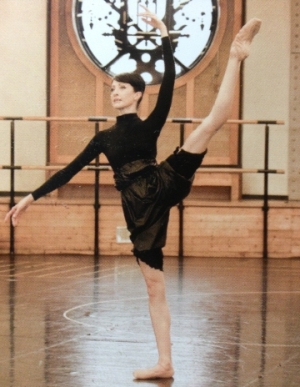 |
Ballet Makes Your Future Fly 芭蕾放飞你的未来 合作伙伴 国家体育总局训练局健身中心 |

|
英皇与Method de Francais 法式体系及芭蕾术语
继法国起源之后,芭蕾舞发展遍及了欧洲其他地方,特别是在俄罗斯,意大利和丹麦。目前,最著名的芭蕾舞教学体系分为:俄罗斯Vaganova及其派生法,Method de Francais法式,英国皇家芭蕾学校和英国皇家舞蹈学院为代表的英式法,以及 Cecchetti 意式。
很多人都知道俄罗斯以芭蕾闻名,但世界上与俄式体系旗鼓相当的非 method de francais 法式体系莫属,在西方芭蕾界有一句圣言,一个完美的舞者是拥有法式的脚加上俄式的手并拥有法式贵族高雅气质的舞者,可见法国人对脚部训练拥有独到之处,他们最大的特点是以勾脚作为训练的一部分,英式也秉承了此特点。法国巴黎歌剧院芭蕾学校可以被称为全世界最严的芭蕾学校,从低年级开始每级只有最好的2个人可以升班,英国皇家芭蕾学校淘汰率在50%。巴黎歌剧院芭蕾学校由 Madam Claude Bessy 为艺术总监和校长,培养出了一批批杰出舞者。
下面这为40多岁的退役etoile Isabelle Ciaravola 拥有法式的高雅和罕见的法式腿脚。
英国可以说是秉承了很多学派的优点,但对英皇大纲特别是旧级别中的教学法最大影响的还是源自法式,包括手位,和头的协调性, port de bras及把杆的训练方法等。新大纲脱胎换骨,成为名副其实的考级大纲,不再涉及教学法,英皇也由此转型为一个专门设置考级和培训专业老师的机构。
Cecchetti法是一种古典及舞剧的舞蹈教学法,是基于伟大的意大利芭蕾大师Enrico Cecchetti(1850年-1928年)的教学而编。诞生于专业舞蹈演员世家,大师Cecchetti在成为知名教师前曾在国际舞台上作为主要演员拥有杰出的职业生涯。他在俄罗斯,波兰,意大利和英国等地教学,成为Anna Pavlova和其他许多著名舞蹈家的私人教练。
Cecchetti后将意大利的教学传统发扬光大,其教学法经Carlo Blasis编纂,它继承了培养平衡力和训练人体比例的目标,不论静止还是运动。Cecchetti课堂教学法科学的培养对手臂,腿和头的协调性,进而产生了动作流水般的美,特别是在上半身表现力上。同时,这种方法为每个进入世界芭蕾专业领域的人提供了强有力的技术基础。
芭蕾术语:
Warm-up: Doing exercises that stretch and loosen the muscles to prepare
your body for dancing.
Barre: A horizontal wooden hand rail that runs around the wall of a
ballet studio.
Alignment: The lining up of parts of your body to make a balanced and
graceful line.
Posture: The position and carriage of the body.
Pointe: A position of the foot in which your heel is held up, your big
toe is stretched down toward the ground, your leg is turned
out, and your foot is in line with your leg.
Positions of the feet: Five different positions in which your weight is
evenly distributed over your feet no matter what position you body
is in, with your legs turned out from the pelvis.
Port de bras: Carriage of the arms. Set movements of the arms from one
position to the other.
Plié: An exercise in which, standing erect and with back straight,you
move down and up with the bend of the knees.
Demi-plié: A half knee-bend. Nearly every step begins and ends with a
demi-plié.
Grand plié: A full knee-bend with heels off the floor.
Elevé:A movement in which you rise up high on to the balls of your feet.
A similar position is also referred to as Relevé.
Coupé: A position of your foot, lifted and held flexed, tight against
your ankle.
Battement: A generic term which describes the various movements in which
the leg makes a beating motion.
Battement tendu: An exercise in which you stretch your foot along the
floor and end in a point.
En croix: In the shape of a cross (front, side, back)
Degagé:An exercise similar to a tendu that finishes with the foot lifted
from the ground in a point.
Rond de jambes à terre: Circle of the leg, on the ground (`a terre). An
exercise in which you mark out a semi-circle on the floor with
your pointed foot.
Balancé: In dance, a term which describes the holding of your body in a
stable position.
Centre Practice: a group of exercises similar to those à la barre but
performed in the centre of the room without the support of the
barre. These exercises are usually performed with alternate feet
and are invaluable for obtaining good balance and control.
Passé: A movement that resembles a pass.
Arabesque: A position in which you balance on one straight leg (or bent
leg) with the other stretched out behind you.
Grand Battement:Meaning large beats. An exercise in which you raise your
pointed foot high off of the ground keeping both legs straight.
Allegro: An Italian musical term meaning quick and lively. In ballet,
allegro steps are completed in fast tempo without your arms
flapping about.
Petit Allegro: Small jumping and turning steps.
Glissade: Gliding or sliding steps. A traveling step in which you glide
your foot along the floor with your front knee bent and you
transfer your weight. During the moment of transition, your legs
are fully stretched.
Demi-pointé: Half point, meaning standing on the balls of your feet.
Bourrée: A linking step in which you rise up on the balls of your feet
(on to your half point) and glide across the floor with quick,
tiny steps.
Pas de Bourrée: A small stepping movement, executed on the balls of the
feet or on pointe,in which the you either skim smoothly across the
floor or transfer the weight from foot-to-foot three times as a
transition into another movement. A pas-de-bourrée consists of
bending both legs,extending one, then stepping up, up, down,
finishing with bent knees.
Pas de chat: A traveling step-of-the-cat in which you bring one foot up
along you leg to the knee, and transfer your weight to the other
leg with a spring in the air,landing with your feet in 5th position.
Routine: In dance, a term meaning a sequence of steps.
Marking: Going through the movements of a dance routine without dancing
fully, in order to familiarize yourself with the steps before
performing.
Finale: The concluding part of a performance.
Grand Allegro: A combination of large traveling steps and jumps.
Pas Marché: The graceful walk to center stage to take a curtsey or bow.
Curtsey: A movement by the female dancer (ballerina)that acknowledges
the instructor at the end of a class, or an audience at the end
of a performance.
Bow: A movement by the male dancer (danseur noble) that acknowledges
the instructor at the end of a class, or an audience at the end of
a performance.
Reverence:A movement,generally made by the sweep of an arm to acknowledge
the rest of the ensemble cast (corps), the instructor, the
choreographer, and/or the orchestra.
RAD英国皇家舞蹈学院官网 | 如何盘芭蕾发髻 | 工作机会
咨询电话:(0)10-6761-8952 1361-138-9603 English Inquiry, Please Call: 1511-020-0236
地址:国家体育总局训练局健身中心2层(北京体育馆) 北京东城区体育馆路甲2号 100061